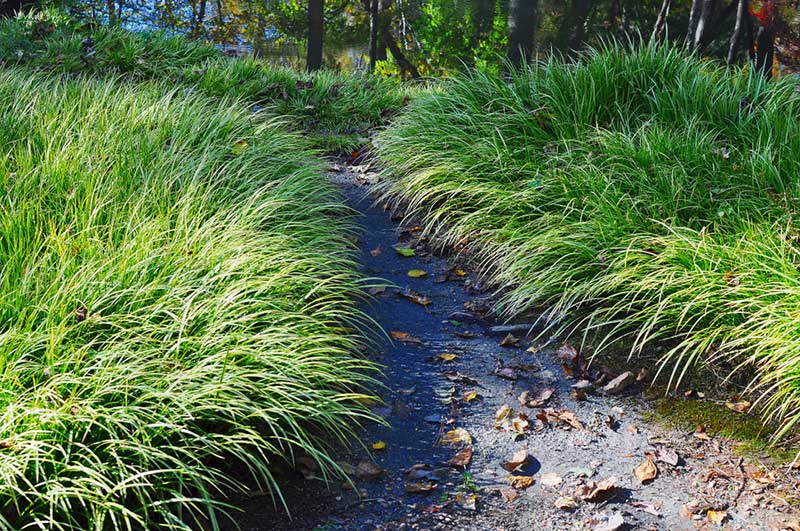
Prairie Dropseed or Sporobolus heterolepis is a warm-season plant that typically grows in large prairies and open ground. It is very popular as a soil-management tool.
It is produced in zone 3-9, meaning it needs relatively warm temperatures that may not be appropriate in many northern areas.
When grown properly, expect growths of over 24 inches in size.
Light and Temperature Requirements
A typical Prairie Dropseed growth needs at least six hours every day of direct sunlight. Temperatures need to be above 50-70 degrees Fahrenheit or 10-21 degrees Celsius for the best growth.
Watering
Most Prairie Dropseed growths have a low-to-moderate needs for water. During most of the growing season, you will probably need to water it no more than once a week or so. Water the ground until it is moist but not soggy – too much water can easily drown the plant.
However, when temperatures get into extreme heat levels – such as 90 degrees Fahrenheit or 32 degrees Celsius – you may need to water 2-3 times per week. Regularly check the soil to see if it is dry. Though this plant can withstand drought reasonably well, it does prefer damp soil.
Soil & Fertilizing
Prairie Dropseed needs no fertilizer to succeed in most soils – it is a resilient grass that can grow just about anywhere. That’s why it is so widespread in so many areas. It often prefers dry and rocky soils over that of clay but can grow in clay-rich regions, if needed.
Make sure that the soil is well-drained regularly, including enhancing your drainage field, if necessary. You probably don’t have to take many steps because this plant is healthy and diverse in its growing environment. But minor excavation may be needed if your soil is too dense or if the clay density makes draining nearly impossible.
Deadheading and Pruning
Prairie Dropseed needs almost no pruning or maintenance during its active growth season but does need to be carefully maintained in the early spring. During this time, the growth needs to be cut or even burned to make way for the new growths that will take their place.
Typically, you start in early spring because this plant will remain active throughout the winter. It can help hold your soil together very well during what can be a very trying time in the winter. Simple pruning or removal of the old growths in the spring helps add new nutrients to the soil, as well.
Propagation
Prairie Dropseed often propagates very quickly on its own without any specialized help. As it is very close to traditional grass, it usually spreads rapidly across whole lawns. However, make sure that you trim up the old and dead growths, as mentioned previously, to ensure that the new development can take its place. If you don’t, you’re going to end up with a very hard-to-grow area for your plants.
Growing From Seed
Keep all seeds in a cold and dry storage center and plant them indoors at least four weeks before the outdoor night temperatures will be in the 10 degree Celsius to 50 degrees Fahrenheit range. When planting, make sure to put them one-quarter inch or 0.64 centimeters deep in the proper soil.
Use artificial light to keep the temperature at least 70 degrees Fahrenheit or 21 degrees Celsius. Keep the soil moist and, when the seedlings are two inches to five centimeters tall, take them outside and plant them at least one foot apart. These steps should give you the proper spread that you need.
Other Elements to Take Into Account
Prairie Dropseed is a disease-free plant, for the most part, and is rarely eaten by insects or other types of pests. Deer may nibble on it occasionally, as may rabbits, though this is rare.
Typically, you can avoid this problem by spreading a small amount of deterrent on the leaves, such as pepper, that will be unappealing to both rabbits and deer. This pepper shouldn’t damage the leaves, thankfully.




